Working from Home with a Puppy [Master the Balance]
Working from home has become the new normal for many people, and bringing a new puppy into the mix can certainly make things interesting.
While the combination of working remotely and having an adorable, energetic furball around might seem like a dream come true, it comes with its own set of challenges. The key to maintaining a healthy work-life balance and ensuring a happy, well-adjusted puppy is to set up structure, create routines, and find ways to keep them entertained throughout the day.
Puppies, much like human professionals, thrive on routine and consistency. Establishing a daily schedule for feeding, playtime, and walks can make a significant difference in both your workday and your puppy’s well-being. Aside from keeping to a regular routine, providing a designated space for work and playtime can also help keep distractions at bay and ensure productivity for both of you.
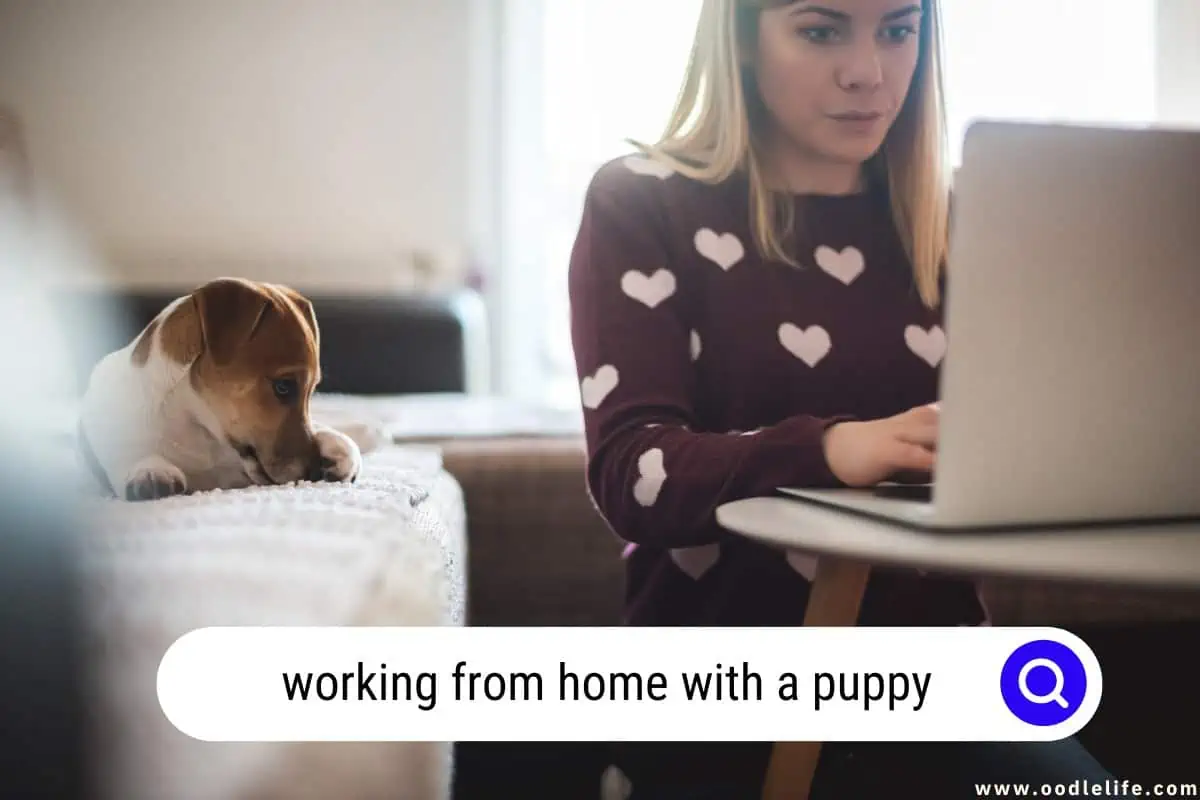
With a little planning, patience, and the right setup, you can foster a positive work environment while nurturing a strong bond with your new furry companion.
Of course, mastering the art of working from home with a puppy doesn’t come without its trials and tribulations. Expect a few accidents as your puppy adjusts to its new surroundings, the occasional whining or barking during important conference calls, or the unexpected game of tug-of-war. Embrace these moments as perks of being a work-from-home puppy parent, laugh it off, and remember that it’s all part of the unique, loveable experience.
Establishing a Routine for Working from Home with a Puppy
Creating a Schedule
When you’re working from home with a puppy, it’s important to establish a daily schedule that suits both your work commitments and your puppy’s needs for playtime, training, and rest.
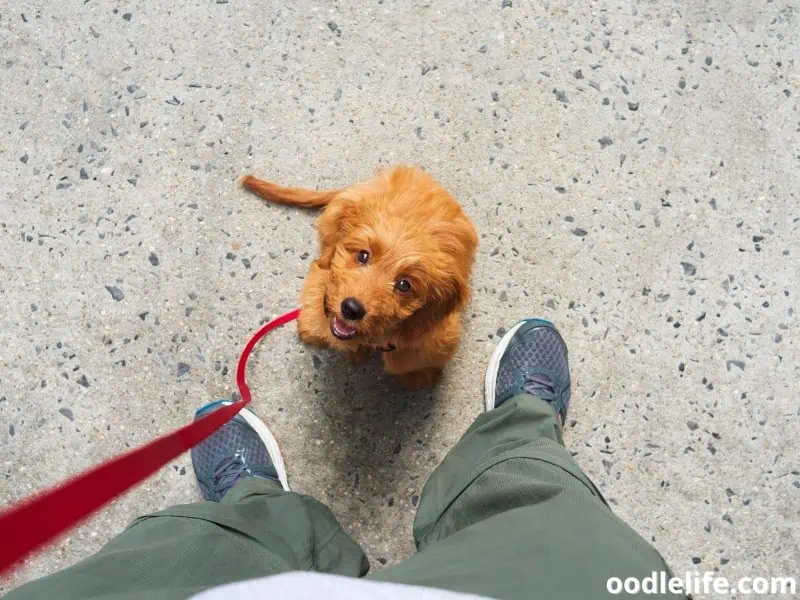
Here’s a suggested daily routine:
- Morning: Wake up, feed your puppy, and take them for a walk to set a positive tone for the day.
- Mid-Morning: Schedule a 10-minute break for some puppy playtime or a quick training session. This keeps them entertained and tires them out, making them more likely to nap during your focused work time.
- Lunch: Take a break to eat and spend some quality time with your puppy. Go for another walk or have a short play session.
- Afternoon: Another 10-minute break for playtime or training.
- Evening: Finish up your work, feed your puppy dinner, and go for an evening walk.
Remember, consistency is key! Sticking to a predictable schedule will help both you and your puppy maintain a healthy work-life balance.
Balancing Work and Puppy Time
Working from home with a puppy can be a juggling act, but it’s important to find the right balance to ensure productivity and a happy puppy.
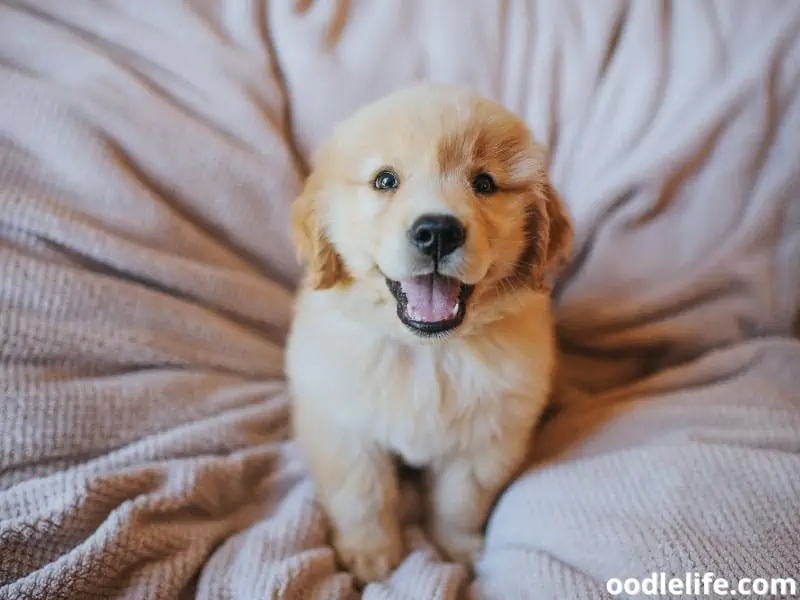
Here are some tips to help:
Create a dedicated workspace: Set up a comfortable and efficient workspace where you can focus on your tasks. If possible, place a dog bed nearby for your puppy to relax in while you work.
Set boundaries: Teach your puppy that your workspace is off-limits during work time to avoid distractions. Use baby gates, separation, or training techniques to establish this boundary.
Use alarms or reminders: Set up alerts on your phone or computer to remind you when it’s time to take a break and spend some dedicated puppy time.
Invest in interactive toys or puzzles: These can keep your puppy entertained during your work hours and alleviate the need for constant interaction.
Be patient: Remember that both you and your puppy are adjusting to this new routine. It takes time to balance work and puppy time, so don’t be too hard on yourself or your furry friend.
By taking these tips into account, you will be well on your way to creating a successful and enjoyable routine that allows you to work from home effectively while also spending quality time with your puppy.
Puppy Training while Working from Home
Obedience Training
Working from home with a puppy can be both rewarding and challenging. One essential aspect to make this coexistence possible is obedience training. Spend a few minutes each day teaching your puppy basic commands like sit, stay, and come.
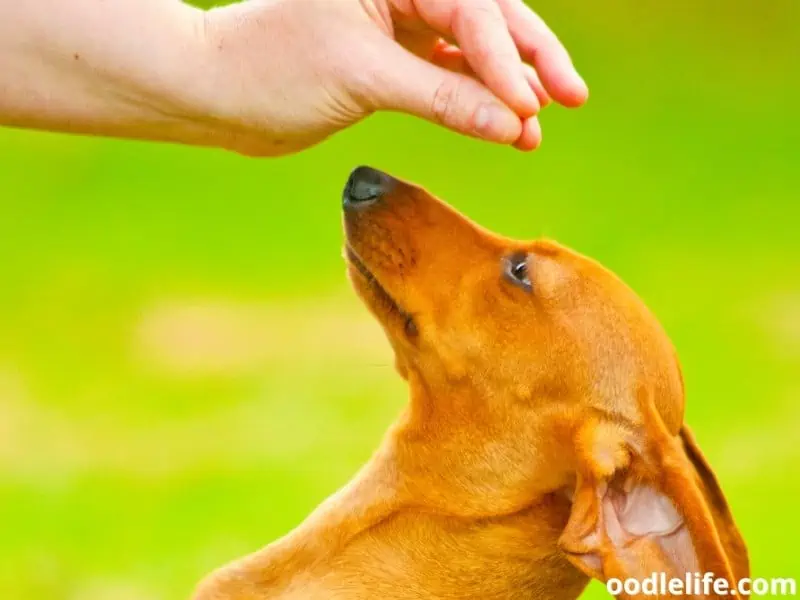
Using positive reinforcement and treats will make the process more enjoyable for both of you.
Incorporate brief training sessions throughout the day, fitting them into your schedule. For instance, try teaching your puppy a new command during your lunch break, or do a quick refresher on previous lessons before starting your workday. Consistency and repetition are crucial for effective obedience training, so be patient and stay persistent.
Crate Training
Crate training is another useful method when balancing work-from-home life with a new puppy. Setting up a designated “puppy zone” that includes a comfy crate and toys will encourage your pup to feel secure and entertained. Remember, the crate should never be used as a punishment, but rather as a cozy, safe haven for your pet.
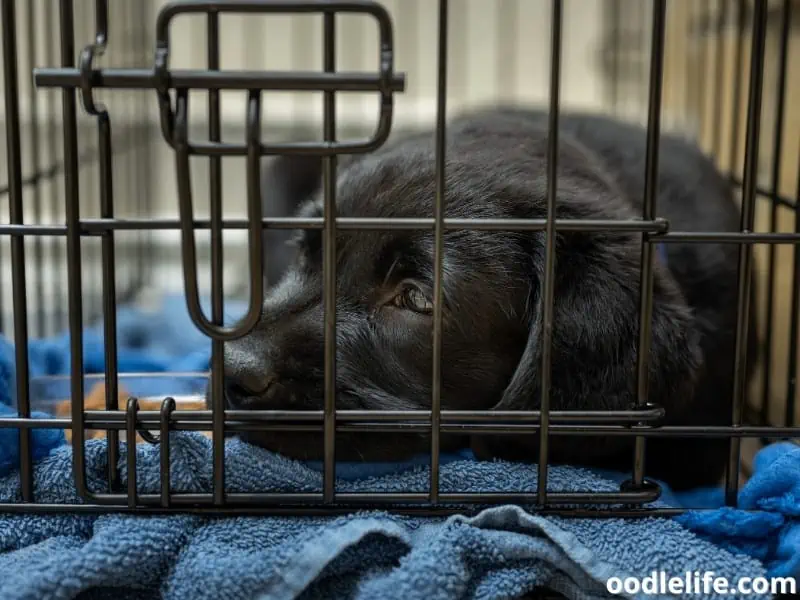
Begin by crating your dog while you work in a separate room, gradually increasing the amount of time they spend alone. This will help your puppy get used to spending time alone and prevent separation anxiety in the future.
With a touch of humor, patience, and plenty of short training sessions, you and your puppy will soon become the ultimate work-from-home team! Just remember, as you adapt to your new four-legged colleague, it’s essential to keep things positive and set clear boundaries. After all, your pup has a lot to learn, and you have work to do – so getting into a routine that works for both of you is the key to a harmonious household.
Activities and Stimulation for Your Puppy
Physical Exercise
Integrating regular physical exercise into your puppy’s daily routine is essential when working from home. Converting your playtime into quick breaks throughout the workday can create the perfect opportunity to bond with your little furry friend.
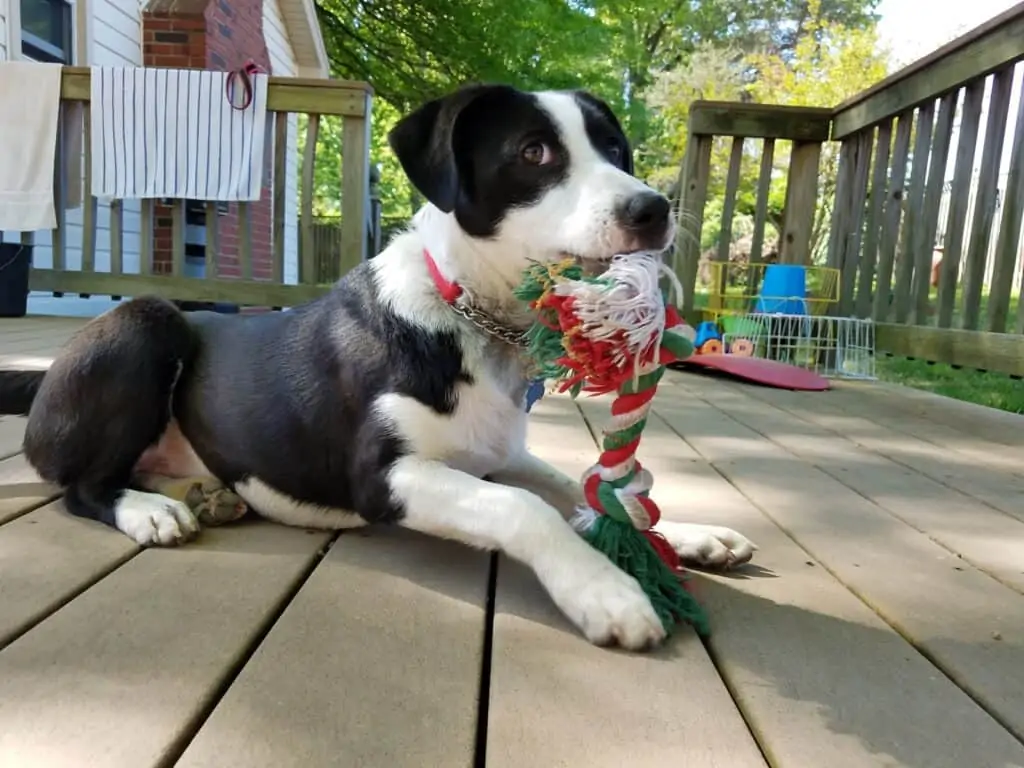
Some fun activities you can incorporate include:
- Taking 15 to 30-minute neighborhood walks
- Playing games like fetch or tug
Not only will these activities keep your puppy engaged and energetic, but they’ll also make that quality time more memorable (and possibly even more enjoyable than your meetings!).
Mental Stimulation
It’s equally important to keep your puppy mentally active.
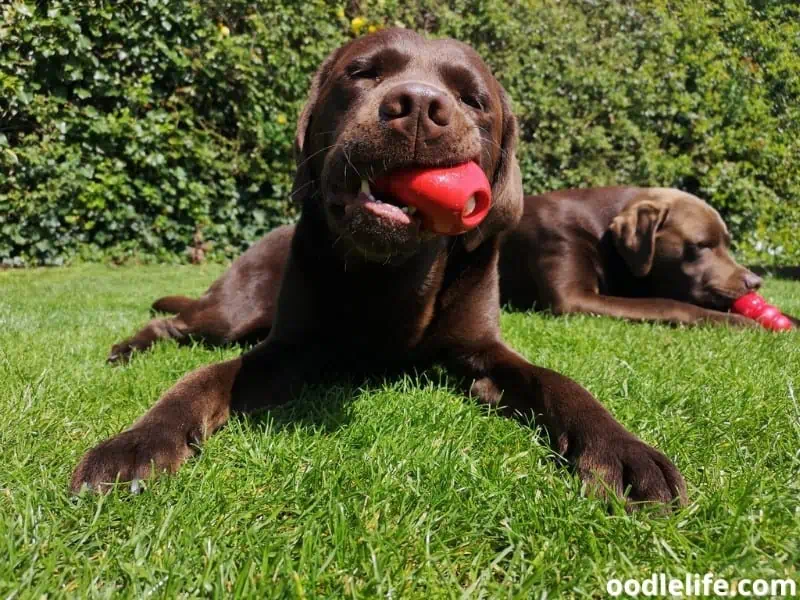
Luckily, there are numerous ways to challenge and entertain their curious minds:
- Interactive toys and puzzles help to stimulate cognition, especially if there are treats involved! Your puppy will be simultaneously rewarded for their curiosity and learning new skills.
- Rotate toys regularly to keep things fresh and maintain interest. Plus, variety is the spice of life, right?
- Socialization is crucial for a well-adjusted pup. Introduce them to various sights, sounds, and smells while ensuring that they maintain proper manners during these encounters. After all, nobody likes a rude puppy!
Remember, meeting both physical and mental needs is the key to happy, well-behaved puppies, and it doesn’t have to be ruff! So, when in doubt, think of a new creative exercise or mental challenge, because “a tired puppy is a happy puppy” isn’t just a cliché—it’s the truth!
Preventing and Addressing Separation Anxiety
Setting Boundaries
When working from home with a puppy, it’s important to establish structure and limits to prevent separation anxiety. Start by designating a puppy-free workspace, where you can focus on work tasks without any distractions or puppy headphones (yes, those exist!). This boundary will also help your puppy adjust to spending time without you.
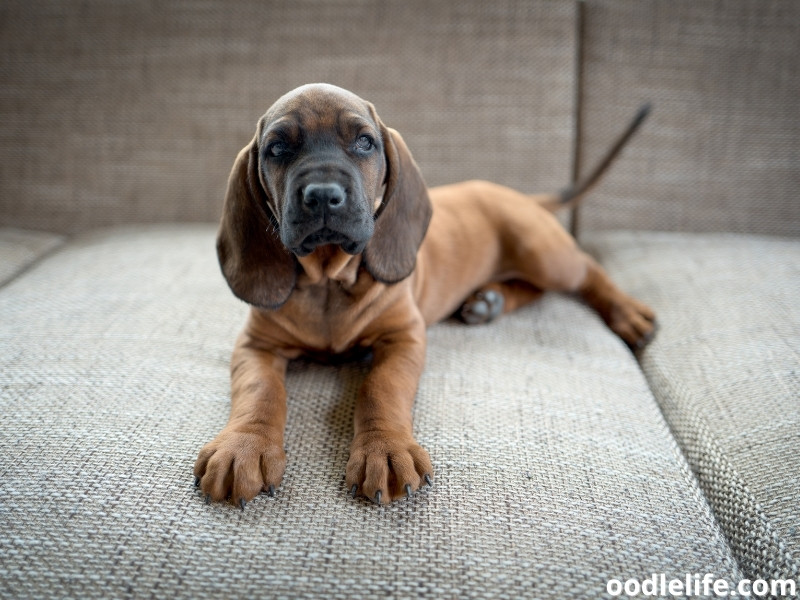
Get your little furry friend used to your working hours by creating a daily routine, including regular playtime and walks (ideally not during conference calls). This will give them a sense of structure and help them understand when they can expect your attention.
Remember: Treat yo’ pup! Reward their good behavior, such as staying quiet or playing independently, with treats and praises for being the goodest doggo who ever did good.
Building Independence
Teaching your puppy to play and relax independently will help minimize separation anxiety while working from home.
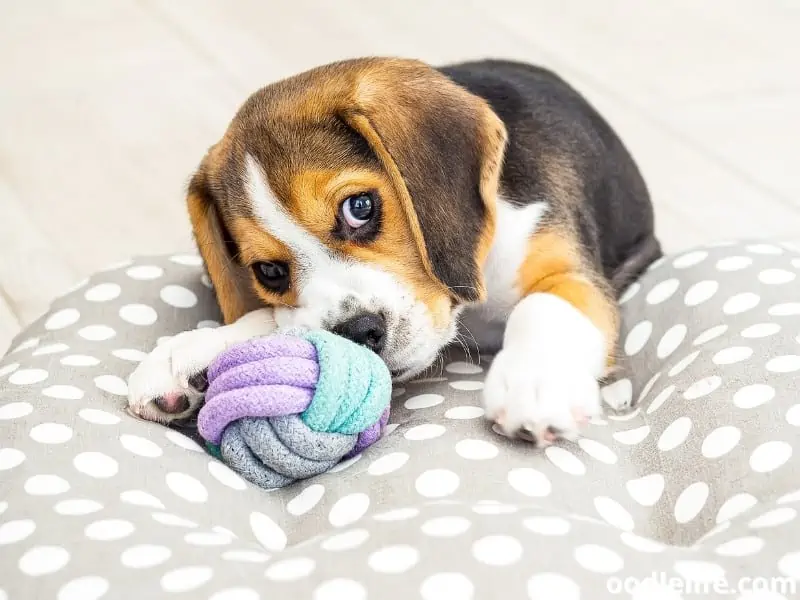
Here are some ways you can foster their independence:
- Leave them a safe, interactive toy or puzzle, like a Kong toy filled with treats or their favorite chew toy. The more difficult the puzzle, the more it will engage their inner pup-thlete.
- Encourage your puppy to spend time in rooms away from you, by placing their bed or crate in another area. Distance will help them learn to appreciate their own space, just like you appreciate your precious time on the couch binge watching your favorite series.
- Provide plenty of exercise before you start work, with a walk or an intense play session. This will tire them out and make them more likely to nap (pro-tip: a napping puppy is basically an invisible puppy).
Remember not to make a big fuss when leaving the room or coming back. This way, you won’t transform your absence into an “event” that could lead your puppy to believe that your disappearances are associated with the apocalypse.
Follow these tips, and both you and your puppy can look forward to a stress-free work-from-home experience. Remember, it’s all about balance, consistency, and a healthy dose of patience. Good luck, and may the pup-force be with you!
Managing Distractions and Staying Productive
Designated Space
Creating a designated workspace for you and a separate comfortable space for your puppy can help both of you stay focused during work hours. Set up a nice doggy bed under your desk or nearby, making your puppy feel comfortable and welcome. Chances are, your dog will be happy to simply sleep while you work.
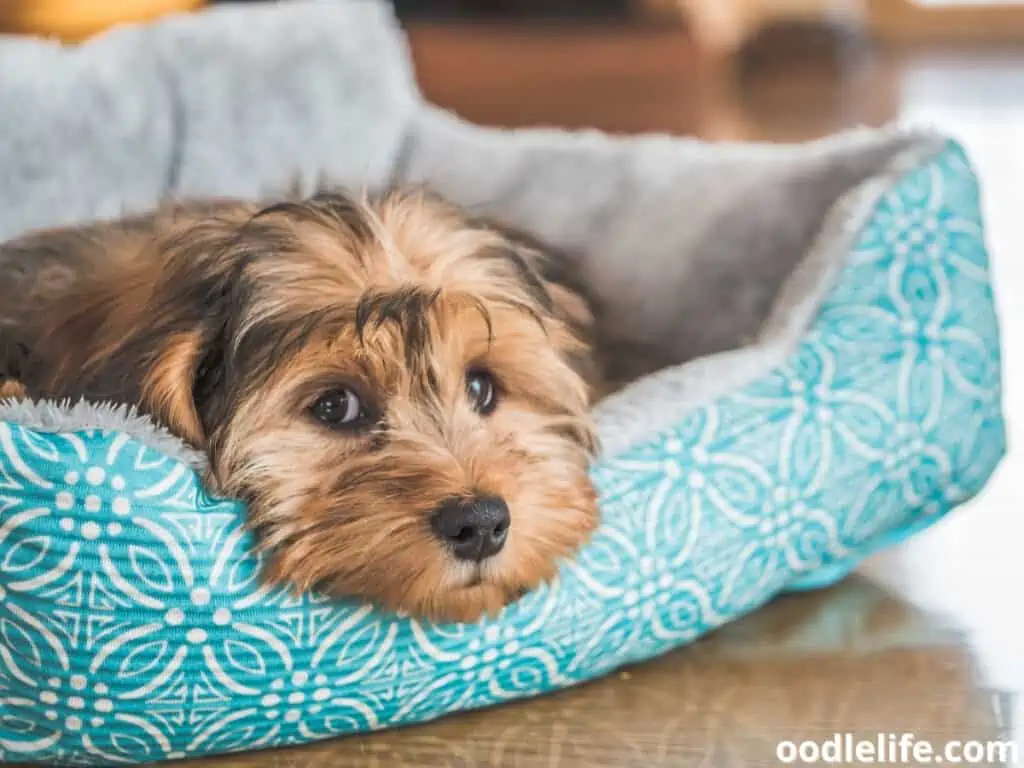
Take regular, consistent doggy breaks to keep your puppy engaged and prevent them from distracting you when you’re trying to concentrate on work. Use this time to take them for a short walk, play a game, or practice some basic obedience training.
Puppy-Proofing Your Home
Puppies, like babies, are curious and love exploring their surroundings. This often results in chewing on things they shouldn’t. To prevent damage to your belongings and ensure a safer environment for your puppy, invest time in puppy-proofing your home.

Here are some steps to follow:
- Secure power cords and cables: Use cable protectors or PVC tubing to prevent your puppy from chewing on cords.
- Store household items out of reach: Put away anything that could be harmful or tempting for your puppy, such as shoes, medications, or cleaning products.
- Block off restricted areas: Use baby gates or playpen fences to limit your puppy’s access to certain parts of your home.
Incorporate these strategies into your remote work routine, and you’ll find it much easier to stay productive while caring for your new furry friend. Remember, patience and consistency are key, but soon enough, you and your puppy will settle into a rhythm that allows for a harmonious work-life balance.
Engaging Your Puppy when You’re Busy
Puzzle Toys
Puzzle toys are a great way to keep your puppy engaged and mentally stimulated while you’re busy working. These toys typically involve hidden treats that your puppy must figure out how to access. Some popular examples include KONG toys and treat-dispensing puzzle balls.
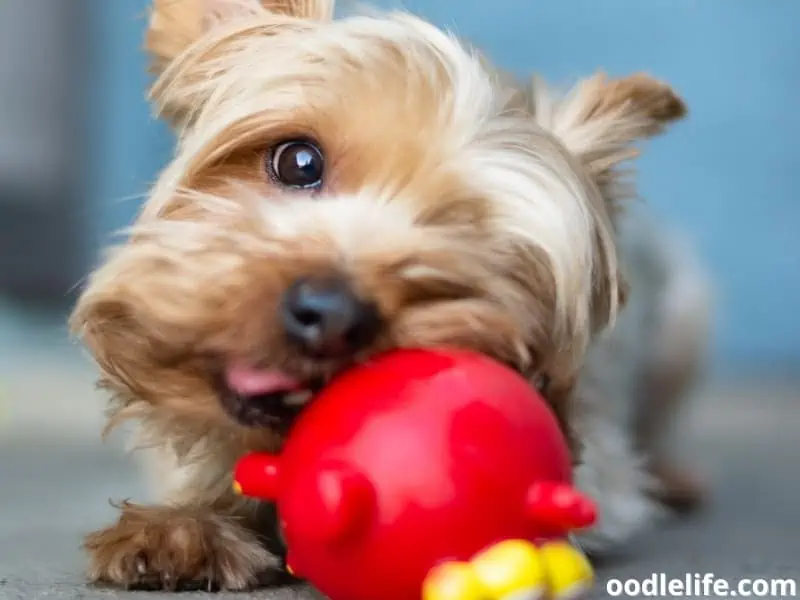
To prolong the fun, consider freezing the toys with treats inside or pack them tightly, making it more challenging for your puppy to access the goodies.
Here are some factors to consider while selecting puzzle toys:
- Make sure to choose the right size, so it isn’t a choking hazard for your puppy.
- Opt for toys made of durable material that can withstand your puppy’s chewing and curiosity.
Remember to rotate the puzzle toys to keep your puppy interested and prevent boredom.
Training Sessions
Short training sessions are not only mentally stimulating for your puppy but also help in building a strong bond between you and your furry friend.
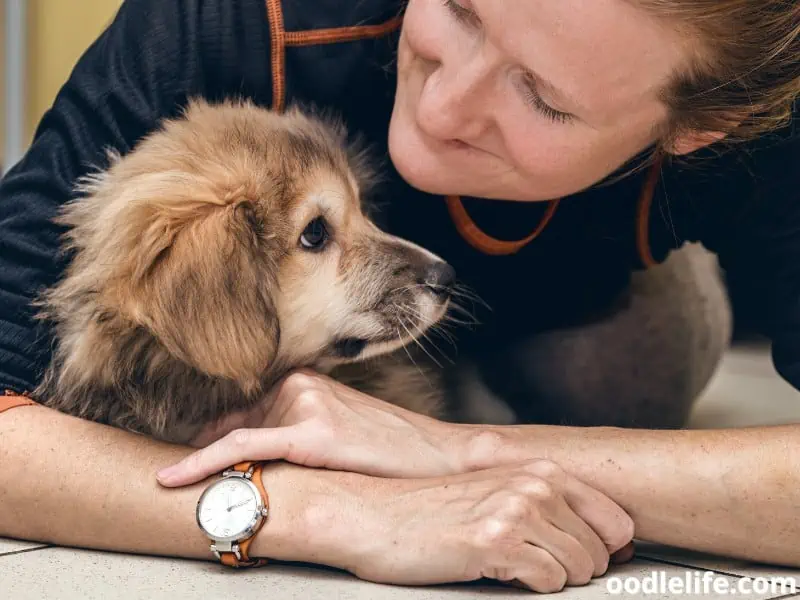
To incorporate training into your work-from-home routine, try the following:
- Schedule mini training sessions during your breaks.
- Focus on teaching basic commands like “sit,” “stay,” “come,” and more.
- Utilize positive reinforcement – lots of praises and treats.
- Keep sessions fun and enjoyable by introducing tricks and new commands gradually.
Additionally, training sessions can be beneficial for:
- Socializing your puppy with other dogs and people.
- Helping them understand their ‘relax’ cue, making it easier to manage them during important conference calls.
Incorporating puzzle toys and short training sessions into your puppy’s daily routine will not only help to keep them engaged and happy but also ensure that you can work effectively without constant distractions. Remember, a mentally stimulated puppy is a happy and well-behaved one.